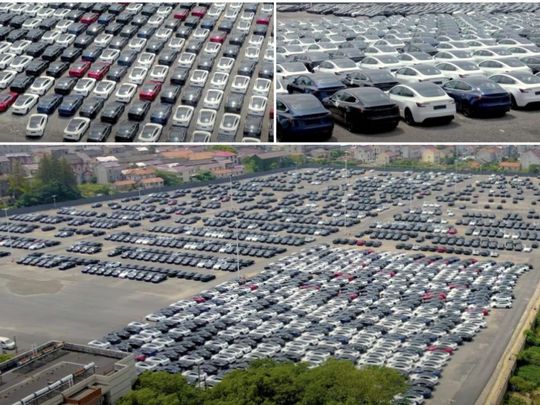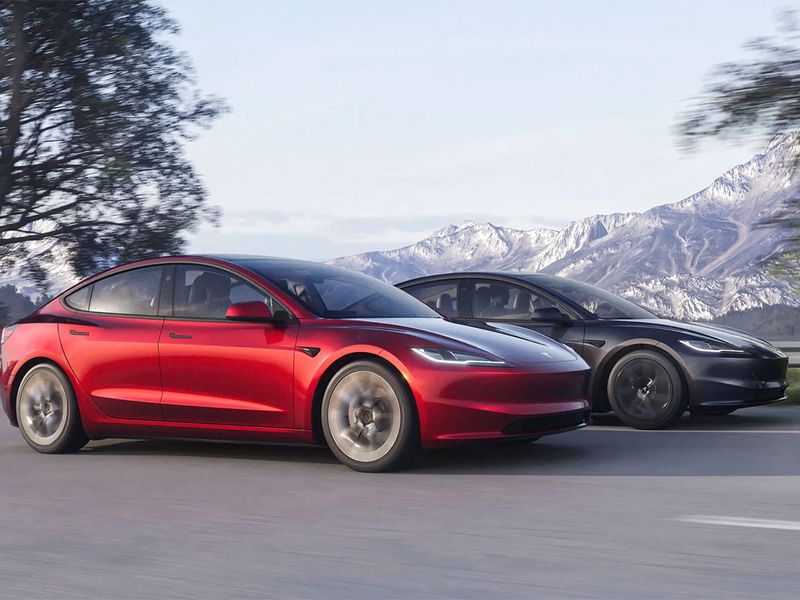
Tesla has recently slashed prices in key markets, including the US, China and Germany. Similar cuts in other markets had been reported on Monday.
Businesses use pricing as a tool to hit strategic goals, while foregoing short-term gains. Pricing is a lever Tesla used often to keep its leading position in the premium segment of the world's largest electric vehicle (EV) market.
In 2023, it unleashed a global EV price war through aggressive pricing. Now, the reduction in the US slashed the starting price for a Model Y to $42,990 (or $29,490 after US federal tax credits and estimated gas savings), and to $72,990 for a Model S and $77,990 for a Model X.
The Model Y long range was $49,990 in January 2021. What's notable is that the cost of production, given economies of scale, has also improved, by than 10 per cent in the last three years, which could help cushion the price cuts.
China, Germany, Europe, Middle East, Africa
In China, Tesla further reduced the starting price by up to 6 per cent of its revamped Model 3 made in its "gigafactory" in Shanghai by 14,000 yuan ($1,930) to 231,900 yuan ($32,000), as indicated on its official website.
Similarly, in Germany, Tesla has lowered the price of the rear-wheel-drive Model 3 to 40,990 euros ($43,670.75), down from 42,990 euros, which had been the price since February.

Price cuts were effected in other countries in Europe, the Middle East and Africa, a Tesla spokesperson told Reuters.
In Thailand, the 2024 Tesla Model 3 in the single motor rear-wheel drive configuration will set you back by 1.59 million Thai bhat ($42,931), whereas the dual motor all-wheel drive variant was priced at 1.89 million Thai bhat ($51,032) in October. A $2,000 or 6 per cent price cut could mean 73,900.00 Thai bhat less.
The move, made ahead of its Q1 earnings due on Tuesday, comes as Tesla faces tougher competition, especially from Chinese EV makers. Tesla recently disclosed a drop in global vehicle deliveries during the Q1 2024, the first decline in four years.
$ 210
billion lost in Tesla market capitalisation since the start of 2024What does this mean? Any price cut is good for customers, in general. Teslas are now significantly more affordable than ever before.
It may be seen from different angles, though. Competitors and investors with billions of dollars at stake are watching the industry closely.
Here’s what we think the knock-on effects would be:
Profit margins:
Musk has stated that their pricing “aligns” production with demand. Lowering prices may initially reduce Tesla’s margins ($ per unit sold). However, if a spike in sales volume outweighs the decrease in margins, Tesla could ultimately see higher profits overall, and claw back market share.
Additionally, economies of scale and cost efficiencies – following what industrial engineers call as “Wright’s Law” – from increased production could help offset the impact on margins over time.
Musk has often made known his belief that what is important is to sell as many cars as possible – even if margins go to "zero". That’s because he believes the real revenue will come from full self driving (FSD) software subscription later, sort of selling more computers (on wheels) to be able to sell more operating systems.
On Saturday (April 20, 2024), Tesla slashed the price of its Full Self-Driving (FSD) service, dropping it from $12,000 to $8,000 (down from its peak of $15,000 in September). Despite its name, FSD is not actually autonomous; it operates at Level 2, requiring a human driver to intervene at any moment.
A week earlier, on April 12, Tesla reduced the subscription fee for FSD from $199 to $99 per month in an effort to encourage broader adoption. It coincides with Musk's intensified focus on autonomous driving, with plans recently announced for a robotaxi unveiling on August 8.
Resale value
Existing Tesla owners may see the value of their vehicles tank more rapidly if newer models are available at lower prices. Knee-jerk reactions are mixed – as early buyers generally unhappy about losing resale value. Price cuts would naturally affect the resale value of older models.
Demand
Price cuts stimulate demands, and widen the market appeal of a product, as it makes the product more accessible to a broader range of consumers. This can lead to an increase in sales volume, especially if the price cut is significant.
Lower prices may help Tesla grab new markets or demographics, potential buyers who were previously deterred by higher costs. This can lead to expansion into new geographical regions or customer segments, potentially increasing market share.
Competitive pressure
This is the most important bit. Looking at a fast-evolving transport industry as a whole, price cuts on the leading EV brand may put pressure on competitors. Both the legacy internal combustion engines (ICE) and EV makers would feel the pressure.
This can lead to further price wars, as rival companies seek to keep or gain market share. Most of its competitors already lose significant amounts of money per EV vehicle sold at their current price.
Brand
The shock, confusion and perceived erratic pricing sounds like a big deal in the short term. For example, customers who bought Teslas in 2021 and 2022 when prices were at their peak, are naturally frustrated. But they’ve had their run time in terms of petrol and maintenance savings that go with EVs in general.
So perception management is key, going forward. As price can impact market perception towards the brand, any perceived pricing uncertainty and volatility has to be managed well. While lower prices may make Tesla vehicles more accessible, they could also be perceived as devaluing the brand.
How can Tesla maintain quality and innovation while lowering prices? If constant improvements and innovation become front and centre of the messaging – the ability of their EVs to “wade” in floods, constant improvements in FSD – the price cuts could enhance its image as a company committed to making sustainable transportation more mainstream.
Investor sentiment
This is the biggest of them all. Investors, especially retail, buy or sell stocks based on short-term data. In general, pricing strategies affect investor sentiment. Musk has been berated by some analysts for portraying the move as “negative”.
Tesla has stated that its goal is not to be the most profitable car maker; rather, it is to accelerate the advent of sustainable transport with mass-market electric cars.
Tesla's market value has fallen by $210 billion since the start of 2024. Prominent analysts, including Gary Black, stated why most bulls will take the price cuts as “negative”.
Long-term investors, on the other hand, may view increased sales and market penetration positively. Ultimately, it’s the market that will decide whether a price cut, or any business decision, is good or bad.










